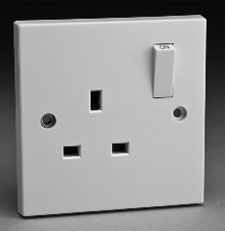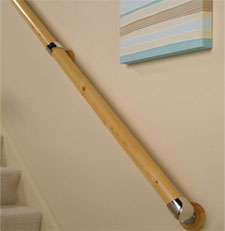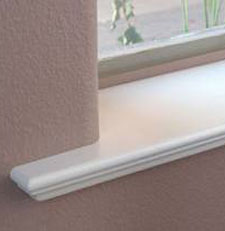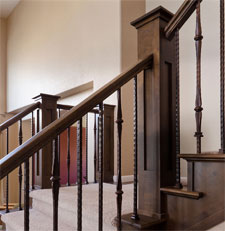The possible alterations to your home to install a stairlift
Unless the width of the stairs is narrow (depending on the model, 28 inches or less), a stairlift can be safely installed on most staircases without any problems. But where the width of the stairs is not a problem, some minor alterations may need to be made on or around your staircase before a stairlift can be fitted safely.
Before I explain what the most common minor alterations are, let me very briefly explain how stairlifts are fitted to staircases:
The track/rail of the stairlift is screwed/bolted to a number of different steps on the staircase (through the carpet if there is one).
That's it. Although this leaves a number of a small holes when the stairlift is removed, having a stairlift installed will not damage the staircase.
So now let's look at the most common minor alterations which are needed to be done on some staircases before a stairlift can be fitted and why:
Adding an electricity socket to connect the stairlift to the mains electricity

Although most modern stairlifts operate on rechargeable batteries, they still need to be connected to the mains electricity through a socket at either the landing or the hallway. If there is no socket on the side of the landing or hallway where the stairlift will be fitted, this may require an alteration.
If there is socket on the other side of the wall, it could just require a hole being drilled through it and the power cable being fed through that. If there isn't, you may have to install a new electricity socket next to the stairlift at either the top or the bottom of the staircase.
Removing a handrail on the staircase

If there is a protruding handrail attached to the wall on the side of the staircase where the stairlift will be fitted, this will have to be removed.
Even if the handrail is not on the side of staircase where the stairlift will be fitted, if the staircase is narrow (29 inches - 35 inches wide), it is very likely that it will have to be removed. Having such a protruding handrail opposite the stairlift on a narrow staircase causes a possible safety risk for people walking up and down the stairs when a stairlift is installed.
Removing a protruding window sill on the staircase

Another common alteration which often needs to be made is to a protruding window sill (the part that sticks out from the wall) if there is a window on the side of the staircase where the stairlift will be fitted. The reason why this needs to be done is that it poses a risk to the person using the stairlift of banging into it whilst the stairlift is moving.
Whether this needs to be carried out on your staircase depends on both where the window is (is it close to the stairlift) and how far the sill sticks out/protrudes. If a stairlift company says the window sill causes a safety issue, the window sill will have to be made level with the wall.
Other possible alterations
Although not very common, the following alterations are sometimes required:
Reducing the width of bannister supports

If the staircase is not wide and one or more of the supports of the banister is/are a lot wider than the rest (if this happens, it is normally at the bottom, top or in the bend in a staircase), this may need to be altered to stop it/them protruding so much.
Adding a bannister

If there is no banister or wall behind the side of the staircase where the stairlift has to be fitted, some form of solid shield or bannister will need to be installed.
Finding out if you need alterations
Although you can guess whether you need some alterations done to install a stairlift on your staircase, you won't know for sure until you get somebody out to both assess your staircase and provide you with a quote for a stairlift.
All stairlift companies will do this for free and as the vast majority will not fit a stairlift unless it is safe to do so, you can trust that if they say you'll need to make a alteration(s), that you will have to do it/them. Even if you have already paid for the stairlift, stairlift companies will not fit the stairlift until the alterations are done.
If you are informed that alterations are necessary, make sure to get the person assessing your staircase to leave you details of what work needs to be done.
Doing the alterations
You have three options for doing the alteration(s):
- Do them yourselves (or somebody in your family or a friend).
- Pay a professional to do them (either a carpenter or electrician).
- Get the stairlift company to do them for you.
Some stairlift companies (but not all) will offer to do the alteration(s) for you, but they will charge you for doing them. Although this is the easiest option to go for, it probably will be the most expensive (they may contract the work out to somebody and add a fee on top).
If you don't or can't do them yourself, I would get a quote for the alternation(s) from the stairlift company and compare it with what you are quoted by an independent electrician or carpenter. You'll probably find the independent electrician or carpenter is cheaper.
Once you've decided who is going to do the alteration(s), communicate to the stairlift company you are buying the stairlift from (unless they are organising it) when the alterations will be done. They will then schedule the installation of the stairlift for shortly after.
Who to buy a stairlift from
Click on one of the flags below to see a list of reputable companies in that country that you can buy a stairlift from and who they are:




